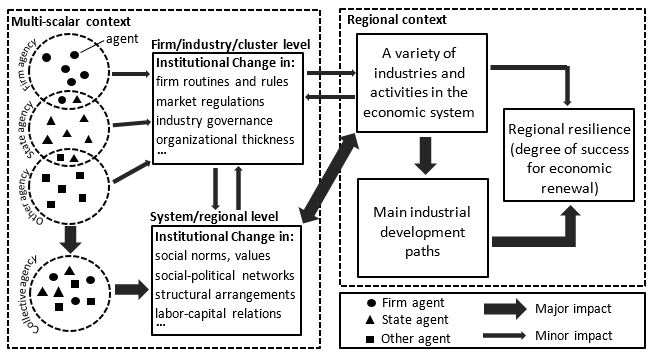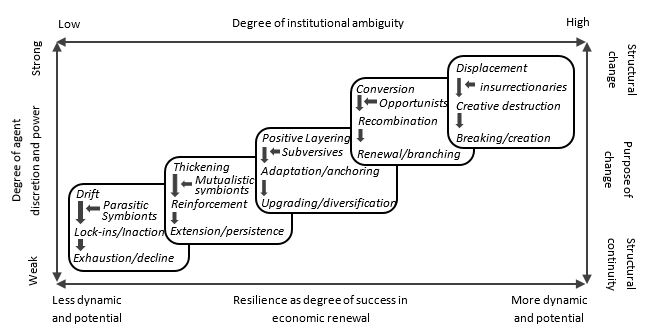Institutional change and divergent economic resilience: Path development of two resource-depleted cities in China
Blog by Xiaohui Hu and Chun Yang
- Created
- 6 Mar 2019, 3:18 p.m.
- Author
- Xiaohui Hu and Chun Yang
- DOI
- 10.1177/0042098018817223
Abstract: https://journals.sagepub.com/doi/full/10.1177/0042098018817223#abstract
The research on regional economic resilience has been flourishing in the last few years. Recently, scholars have started to highlight the role of agency and institutional change in conceptualizing regional resilience (Bristow and Healy, 2014; Evenhuis, 2017). They argue that resilience refers to evolutionary processes by which agency, institutions and development paths (main economic activities and industries in regions/cities) interactively adapt and co-evolve over time and space. Nevertheless, the causal relationships between agency, institutional change, path development and regional resilience are still under-researched.
This paper conceptualizes regional resilience by combining the concept of industrial path development with an institutional change perspective highlighting the role of agency. Empirically, taking two Chinese resource-depleted cities, namely, Zaozhuang and Fuxin, as cases, it illustrates how different modes of institutional change occur in the cities, and how they generate divergent patterns of industrial path development that lead to uneven resilience.
This paper has two key contributions: it 1) illustrates the basic casual chain of agency, institutional change, path development and regional resilience (Figure 1); 2) develops a novel approach to understand regional resilience (Figure 2). The approach highlights how different types of institutional change with distinct agencies shape certain patterns of regional industrial path development and divergent resilience.
Figure 1. the causal chain of agency, institutional change, path development and regional resilience
Figure 2. An institutional change framework for understanding divergent resilience of cities and regions
Empirically, the paper elucidates that the state and SOEs at multiple levels play salient roles in affecting governance institutions that shape regional industrial paths in resilience. Zaozhuang has facilitated positive institutional change, which underpin new industrial (tourism) emergence and old industrial (mining) renewal towards structural change. Fuxin has failed to foster institutional change at the system level. The city’s main activities tend to be at the mercy of, limited by, top-down policy interference in self-reinforcing institutional environment. Fuxin thus focuses on the adding of firm and organizational-level institutions resulting in old industrial path (mining) extension and persistence with less dynamic resilience.
The authors think that an institutional change perspective can provide a better understanding of the variegated mechanisms and processes of industrial path development in regional resilience. The ways in which institutions and industries co-evolve are not only conditioned by place- specific assets and histories, but also contingent upon how agents shape multi-level institutions, highlighting the important role of agency in understanding uneven processes of economic resilience (Martin and Sunley, 2015).
References
Bristow G and Healy A (2014) Regional resilience: an agency perspective. Regional Studies 48: 923–935.
Evenhuis E (2017) New directions in researching regional economic resilience and adaptation. Geography Compass, 11(11), e12333.
Martin R and Sunley P (2015) On the notion of regional economic resilience: conceptualization and explanation. Journal of Economic Geography 15: 1–42.
Read the paper on Urban Studies - OnlineFirst here.




Comments
You need to be logged in to make a comment. Please Login or Register
There are no comments on this resource.